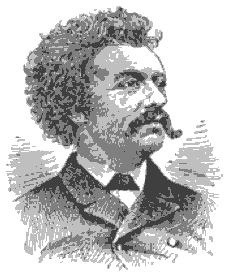John Savage (Fenian) facts for kids
Quick facts for kids
John Savage
|
|
|---|---|
 |
|
| Born | 13 December 1828 Dublin, Ireland
|
| Died | 9 October 1888 (aged 59) Spragueville, Pennsylvania
|
| Occupation | Writer |
| Spouse(s) |
Louise Reid
(m. 1854) |
| Signature | |
 |
|
John Savage (born December 13, 1828 – died October 9, 1888) was an important Irish writer, journalist, and poet. He was a member of two groups that worked for Irish independence: the Young Irelanders and the Fenians. He used his writing to inspire people to fight for freedom.
Contents
Early Life and Activism
John Savage was born in Dublin, Ireland, on December 13, 1828. As a young art student, he became involved in the movement for Irish freedom in 1848. He wrote a letter to The Nation newspaper on March 11, 1848. In his letter, he suggested that students should form a group to train like soldiers. This idea led to the creation of the Students' Club.
The Students' Club
In April 1848, John Savage and John de Courcey Young created a publication called The Patriot. The British Government quickly stopped this publication and took all copies. In the same month, the Students' Club held a meeting. John Savage led the meeting. They decided to form a small group to figure out how club members could get weapons. This decision came after a suggestion from Richard Dalton Williams, a popular poet from The Nation.
Writing for The Irish Tribune
Savage wrote poems for The Irish Tribune, a newspaper that first came out on June 10, 1848. This newspaper was also stopped by the authorities after only five issues. Working with The Irish Tribune helped Savage develop his skills as a poet and writer. The first part of his poem, "Up! Up! Brothers All," was called a "National Anthem of Freedom."
Up! Up! Brothers all
For Liberty dear!
From Dark Donegal
To sea-beat Cape Clear,
From Achill's west isles
To Ben Heder's head
A young nation smiles
Round Liberty's bed.
Because of his activities, the Royal Dublin Society suggested he could not continue as a student. When the owners of the Tribune were arrested in July, Savage left Dublin to avoid being arrested himself. He went to County Tipperary to find other Irish leaders. He met John O'Mahony, and together they planned an attack on a military base in Portlaw, County Waterford. However, they did not have enough people and had to give up the attack.
Escape to America
John Savage managed to escape Ireland on a ship from Dublin. He arrived in New York City, USA, on November 7, 1848. Just a week later, he started working as a proofreader for the New York Tribune newspaper. In January 1854, Savage also worked with John Mitchel on his first American newspaper, The Citizen. In August of that year, he married Louise Reid. Her father, Samuel Chester Reid, was a sea captain who helped design the current American flag.
A Prolific Author
John Savage was a very busy writer. In 1856, he published a book called 98 and '48. He also wrote Fenian Heroes and Martyrs and Picturesque Ireland.
In 1857, Savage moved to Washington, D.C.. There, he became the main writer for the States Journal newspaper. He wrote a play called Sybil, which was performed in different parts of America and later published in 1850. In 1860, he published Our Leading Representative Men. This book contained short biographies of people running for president in 1861. He later expanded one of these biographies into a full book about Andrew Johnson.
It is believed that Savage joined the 69th Regiment and fought in the American Civil War for the Union (Federal Government). During the war, he wrote inspiring poems. One of his poems, "The Starry Flag," was written in May 1861 while he was on a United States transport ship.
Many collections of Savage's poems have been published in America. One of his most famous poems is "Shane's Head."
Involvement with the Fenians
Savage played a very important role in organizing the Fenian movement in America. The Fenians were a group dedicated to achieving Irish independence. He traveled across the United States to promote their cause. President Johnson suggested him for the role of United States Consul in Leeds, England, but the appointment never happened. Savage became a very popular speaker. In 1879, Saint John's College (now Fordham University) gave him an honorary degree.
Death
John Savage passed away at his summer home in Laurelside, near Spragueville, Pennsylvania, on October 9, 1888. He was 59 years old. He was survived by his wife and an adopted daughter.

